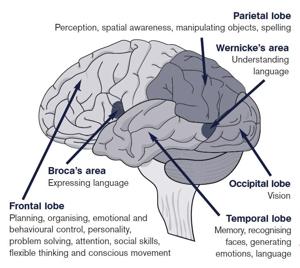
The brain has very limited repair mechanisms compared to other tissues such as skin This limitation is due largely to the special properties of neurons, or nerve cells in the brain. Skin cells can keep dividing and replacing themselves, whereas neurons do not divide very much at all and have a limited capacity to regenerate.brain repair (ad) When neurons die due to injury or disease, this can cause permanent damage.
Neurological properties and issues
Neurons are a class of highly specialized cells that do not divide and therefore are susceptible to damage from a variety of sources — from trauma, stroke or through neurodegenerative diseases. When these cells become damaged, they tend to necrose (necrotize), which means that the tissue dies without a chance of being replaced. After injury, the brain responds by forming a glial scar that can be beneficial and yet also serve as a barrier. This scar can do a good job of secluding the injury site, limiting further damage but it also releases inhibitory factors that hinder axon regeneration, complicating the recovery process.
Compensatory Neuroplasticity
And yet the brain has this incredible ability to compensate, which is best understood in terms of neuroplasticity. This process is a way for the surviving neurons to create new connections and paths in order to overcome lost functions. However, the degree of plasticity is determined by how many neurons survive; injuries severe enough to kill a lot of these cells mostly extinguish this ability. It is also believed that by promoting neuroplasticity with targeted therapies and rehabilitation efforts can lead to improved outcomes in recovery for individuals with brain-related traumas.
Strategies on the Horizon for Brain Repair
In recent years, new discoveries in neuroscience have opened up novel strategies to increase the mechanisms of repair by the brain. Just two examples are the use of stem cells and bioscaffolds to help encourage neuronal regrowth and repair The new work examines ways of tweaking the brain’s chemistry to give it a boost in creating new neurons, or neurogenesis, especially after injuries such as strokes. Additionally, the identification of niches like the choroid plexus that act as a reservoir for restorative cells opens new paths in regenerative medicine approaches for brain injuries.
Ultimately, the natural regenerative potential of brain cells restricts the reparative capacity of the central nervous system, but improving our knowledge on these cellular responses may reveal strategies that can be incorporated in clinical environments to improve recovery and assist with functional restoration after neurodamage.
